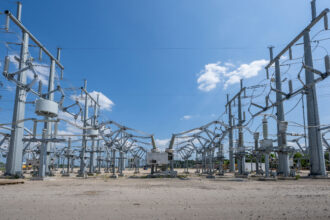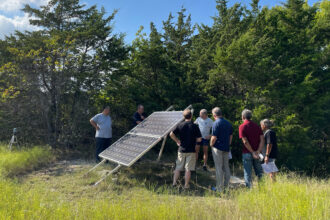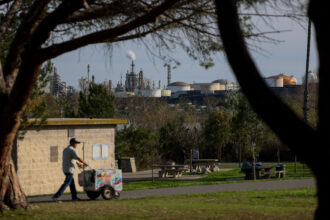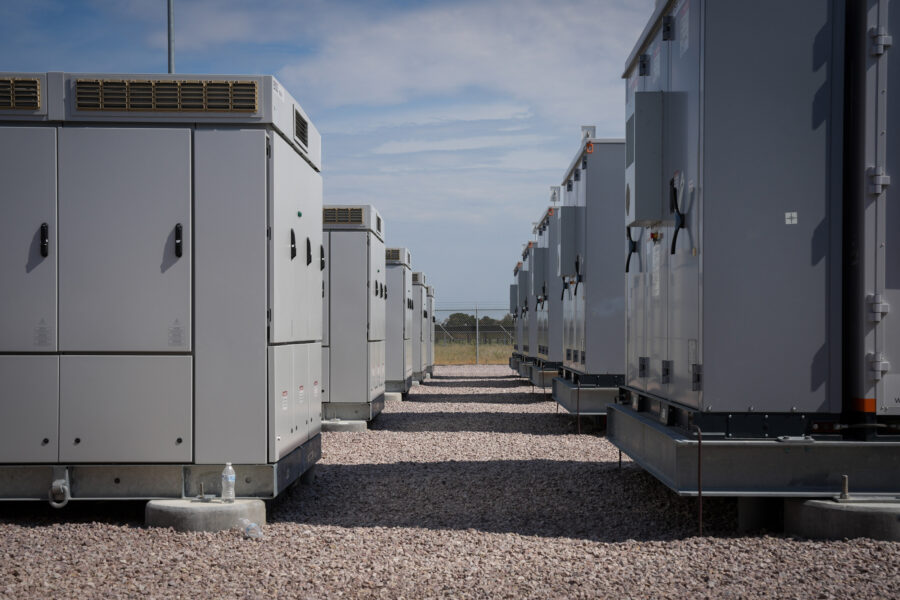Texas’ independent grid is meeting a large portion of the state’s rising electricity demand through its growing fleet of solar facilities, wind power generators and batteries, according to the U.S. Energy Information Administration (EIA).
In the first nine months of 2025, the Electric Reliability Council of Texas (ERCOT) saw record demand on the grid compared with the same period in previous years.
The Texas grid also had the fastest electricity demand growth among U.S. electric grids between 2024 and 2025, a trend expected to continue through next year. ERCOT is tracking more than 200 gigawatts of large load interconnection requests—large energy users like data centers and industrial facilities looking to connect and buy power from Texas’ wholesale electricity market.
Utility-scale solar has led the growing number of renewable energy sources helping ERCOT meet its skyrocketing demand. Together, wind and solar generation met more than one third of ERCOT’s electricity demand in the first nine months of this year, according to the EIA.
Solar power has generated 45 terrawatt hours of electricity so far this year—50 percent more than the same period in 2024 and nearly four times more than the same period in 2021.
The availability of solar generation in ERCOT also has reduced the need for gas-fired generation during midday hours, according to the EIA. This energy production comes despite attempts by some Texas lawmakers earlier this year to restrict renewable development across the state.
For Dennis Wamsted, an energy analyst at the Institute for Energy Economics and Financial Analysis, ERCOT’s growing share of renewables shows that it’s the preferred resource type when an energy market is open, like Texas’ deregulated market.
“People are going to build solar and wind, and now battery storage, essentially as quickly as they possibly can,” Wamsted said. “It’s economic—it is what customers want.”
ERCOT has become the place to build power projects quickly in the U.S. Because it’s the grid with the fastest interconnection process, developers are able to get projects online within a few years.
The friendly regulatory environment has made it the norm for some generators to not only sell to the ERCOT market, but to also sell their power privately to companies through power purchase agreements. It allows both the generator and the company to lock in a price, offering them both cost security for years from an otherwise shifting ERCOT market. These options make ERCOT the grid to build renewables in bulk, Wamsted said.
“It wouldn’t be happening if they weren’t also reliable and cost effective,” Wamsted said of renewables. “Nobody’s running out to build something that’s overpriced and can’t be counted on.”
Throughout the next five years, supply should be able to keep up with the quick pace of demand coming to ERCOT, said Nathalie Limandibhratha, BloombergNEF’s U.S. power analyst. But BloombergNEF’s forecasts show that in 10 years, Texas’ supply will no longer be able to keep up. There will be an imbalance if demand continues to march on at the same pace, said Limandibhratha.
This story is funded by readers like you.
Our nonprofit newsroom provides award-winning climate coverage free of charge and advertising. We rely on donations from readers like you to keep going. Please donate now to support our work.
Donate NowWhile solar and storage are expected to maintain similar growth rates, part of the supply shortfall is due to the decline of thermal energy additions after 2030, Limandibhratha said. Meanwhile, in the last year, BloombergNEF’s forecast for solar and storage was revised upward significantly as the market moves quickly, Limandibhratha said.
While natural gas remains the largest source of electricity within ERCOT, meeting 43 percent of 2025 demand, its generation has flattened in recent years, according to the EIA. In the first nine months of 2023 and 2024, natural gas powered 47 percent of the state’s electricity.
Wind generation this year through September totaled 87 terrawatt hours, up 4 percent compared to the same period in 2024 and 36 percent since 2021. This growth comes despite political headwinds against the resource type. In the first days of his second term, President Donald Trump pledged to end new developments of wind energy, and his administration has since taken numerous steps to block projects.
Even with those disruptions and the influx of solar and storage, ERCOT continues to be a leader in securing new wind interconnections, according to a joint report from Wood Mackenzie and the American Clean Power Association published last week. But it’s expected that the Midwest will lead wind installations in 2027 and 2028, surpassing Texas.
About This Story
Perhaps you noticed: This story, like all the news we publish, is free to read. That’s because Inside Climate News is a 501c3 nonprofit organization. We do not charge a subscription fee, lock our news behind a paywall, or clutter our website with ads. We make our news on climate and the environment freely available to you and anyone who wants it.
That’s not all. We also share our news for free with scores of other media organizations around the country. Many of them can’t afford to do environmental journalism of their own. We’ve built bureaus from coast to coast to report local stories, collaborate with local newsrooms and co-publish articles so that this vital work is shared as widely as possible.
Two of us launched ICN in 2007. Six years later we earned a Pulitzer Prize for National Reporting, and now we run the oldest and largest dedicated climate newsroom in the nation. We tell the story in all its complexity. We hold polluters accountable. We expose environmental injustice. We debunk misinformation. We scrutinize solutions and inspire action.
Donations from readers like you fund every aspect of what we do. If you don’t already, will you support our ongoing work, our reporting on the biggest crisis facing our planet, and help us reach even more readers in more places?
Please take a moment to make a tax-deductible donation. Every one of them makes a difference.
Thank you,













